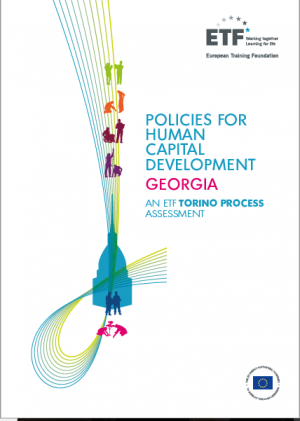The ETF Torino Process assessment provides an external, forward-looking analysis of the country's human capital development issues and VET policy responses from a lifelong learning perspective. It is based on evidence provided in Georgia's national Torino Process report compiled in 2019 using a standardised questionnaire (national reporting framework) as well as additional information and data sources, where relevant.
Georgia is a small, lower-middle-income country. Like its neighbours, it has undergone a transition process with significant economic and social changes. It has an aging population due to both low fertility rates and high emigration flows. The country is an open economy with a flexible labour code, and ranks 6th in the World Bank's Ease of Doing Business. As a result, it has attracted high amounts of foreign direct investment (FDI) in the last decade. During the same period, it has received substantial donor support in the development of its education and VET system.
In general, while Georgians enjoy relatively wide access to education, there are loose links between education and employment. Access to education is high, the literacy rate is virtually 100% and there is nearly universal enrolment in primary education and comparable enrolment rates in secondary education. Enrolment figures suggest that secondary and tertiary enrolment can still improve, but the education levels of the Georgian labour force compare well even with high-income European countries (34.2% of the labour force participants have tertiary education). Wide access to (general) education is also confirmed by 12.8 years of average schooling and 15 years of expected schooling for pupils enrolling today.
However, according to the World Bank's recently launched Human Capital Index, after accounting for students' learning gains, the learning-adjusted years of schooling drop to 8.9 years. The OECD's PISA results also show a high share of 15-year-olds who could achieve only the lowest level of proficiency in reading, math and science. Although Georgia has improved its results from 2010 to 2015 round, the most recent PISA results in 2018 round shows deterioration, with more than 60% of students among the lowest achievers group in all three fields. Furthermore, VET is characterised by a very small size and low participation rate. For example, VET enrolment as a percentage of upper secondary education was 8.8%, while the share of the 15 to 24 cohort that participated in formal VET programmes was 4.5% in 2017. Levels I, II and III represent initial vocational education (IVET) (vocational schools) and levels IV and V represent secondary vocational education (community colleges).

